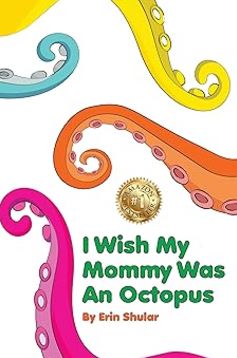Children’s stories have always been a gateway to creativity, learning, and emotional development. From classic fairy tales to modern picture books, these narratives captivate young minds. Among the many elements that make children’s stories memorable, humor holds a special place. The laughter sparked by funny characters, quirky plots, or silly situations not only entertains but also creates meaningful connections between children and those who share the experience with them.
Humor in children’s stories is more than just entertainment; it’s a powerful tool for learning, bonding, and fostering joy. Here’s why laughing together through children’s stories is so impactful.
1. Humor Encourages Engagement
Children are naturally drawn to things that make them laugh. Funny stories or comedic elements in a narrative grab their attention and keep them engaged. Whether it’s a mischievous character like Dr. Seuss’s Cat in the Hat or the absurdities in Roald Dahl’s The Twits, humor creates an emotional response that connects children to the story.
Why It Matters:
When children are engaged, they’re more likely to absorb the story’s lessons, whether it’s about kindness, problem-solving, or resilience. Shared laughter deepens the experience, making both the story and its moral more memorable.
2. Shared Laughter Strengthens Relationships
Reading funny stories together creates a unique opportunity for bonding. When parents, caregivers, or teachers laugh alongside children, it fosters a sense of closeness and shared joy. Humor becomes a shared language that bridges generational gaps and strengthens connections.
Why It Matters:
Children often associate laughter with feelings of love and security. When you laugh together, it signals that you’re present, engaged, and sharing in their happiness. This strengthens the trust and emotional ties between you and the child.
3. Humor Builds Emotional Resilience
Life isn’t always easy, even for kids. Humor in stories can provide a safe way to explore challenging emotions, like fear or sadness, while maintaining a lighthearted perspective. By introducing funny moments in otherwise serious contexts, stories teach children that even difficult situations can have a brighter side.
Why It Matters:
Humor helps children develop coping mechanisms. When they see characters laugh in the face of adversity, they learn to approach their own challenges with a positive attitude. This resilience is a valuable life skill.
4. Humor Boosts Creativity and Imagination
Funny stories often feature absurd scenarios, exaggerated characters, and nonsensical outcomes. These elements encourage children to think outside the box and explore the limits of their imagination.
Why It Matters:
When children engage with humor, they learn to see the world in unconventional ways. This fosters creative thinking, which is essential for problem-solving, innovation, and self-expression.
5. Humor Makes Learning Fun
Many educational stories incorporate humor to teach important concepts in a way that feels enjoyable rather than instructional. Whether it’s a rhyming tale that makes phonics fun or a math story with silly characters, humor keeps kids interested in learning.
Why It Matters:
Laughter reduces stress and creates a positive environment, making children more receptive to new ideas and concepts. This turns learning into an exciting adventure rather than a chore.
How to Use Humor in Children’s Stories
When selecting or creating humorous stories for children, keep the following tips in mind:
- Age-Appropriate Humor: Tailor the jokes and silliness to the child’s age and comprehension level. Younger children may enjoy slapstick comedy, while older kids might appreciate witty wordplay.
- Relatable Themes: Stories with humorous takes on everyday situations, like bedtime battles or picky eating, resonate with kids and make them laugh at their own experiences.
- Balance: While humor is important, ensure it complements the story’s theme and doesn’t overshadow its message.

Conclusion
Humor is a powerful tool in children’s stories, offering far more than entertainment. It captivates their attention, strengthens emotional bonds, and fosters critical skills like resilience, creativity, and a love for learning. When parents, caregivers, and children laugh together over a story, they’re not just sharing a moment of joy, they’re building a foundation for stronger relationships and a brighter future.
So, grab a funny book, gather your little ones, and let the laughter flow. Because in the world of children’s stories, a good laugh is often the best way to learn and grow, together.
Looking For A Humorous Story To Share A Laugh?
Children’s stories filled with humor, like I Wish My Mommy Was an Octopus by Erin Shular are perfect for sparking these moments of joy. By incorporating laughter into your everyday life, you can strengthen your bond with your child while teaching them the value of happiness, connection, and imagination.
Grab your copy now! So, the next time you pick up a storybook, make sure to share a laugh.




